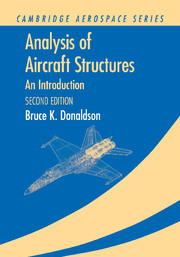Book contents
- Frontmatter
- Contents
- Introduction to the Second Edition
- Introduction to the First Edition
- List of Repeated Engineering Symbols
- Acknowledgments
- Part I The Fundamentals of Structural Analysis
- Part II **Introduction to the Theory of Elasticity**
- Part III Engineering Theory for Straight, Long Beams
- 9 Bending and Extensional Stresses in Beams
- 10 Beam Bending and Extensional Deflections
- 11 Additional Beam Bending Topics
- 12 Uniform Torsion of Beams
- 13 Beam Torsion Approximate Solutions
- Beam Bending and Torsion Review Questions
- 14 Beam Shearing Stresses Due to Shearing Forces
- Part IV Work and Energy Principles
- Part V Energy-Based Numerical Solutions
- Part VI Thin Plate Theory and Structural Stability
- Appendix A Additional Topics
- Appendix B Selected Answers to Exercises
- References
- Index
Beam Bending and Torsion Review Questions
from Part III - Engineering Theory for Straight, Long Beams
Published online by Cambridge University Press: 05 June 2012
- Frontmatter
- Contents
- Introduction to the Second Edition
- Introduction to the First Edition
- List of Repeated Engineering Symbols
- Acknowledgments
- Part I The Fundamentals of Structural Analysis
- Part II **Introduction to the Theory of Elasticity**
- Part III Engineering Theory for Straight, Long Beams
- 9 Bending and Extensional Stresses in Beams
- 10 Beam Bending and Extensional Deflections
- 11 Additional Beam Bending Topics
- 12 Uniform Torsion of Beams
- 13 Beam Torsion Approximate Solutions
- Beam Bending and Torsion Review Questions
- 14 Beam Shearing Stresses Due to Shearing Forces
- Part IV Work and Energy Principles
- Part V Energy-Based Numerical Solutions
- Part VI Thin Plate Theory and Structural Stability
- Appendix A Additional Topics
- Appendix B Selected Answers to Exercises
- References
- Index
Summary
Part III. True or False?
(Answers at the end of this section)
A basic difference between the theory of elasticity and strength of materials (“applied elasticity”) is that strength of materials solutions are based upon an approximation of either the stress field or the displacement field, while the theory of elasticity uses neither approximation.
Even for a nonhomogeneous beam, in Bernoulli–Euler straight beam bending theory both the displacements and the strains vary linearly in both centroidal coordinate directions over a compact beam cross-section.
Even for a nonhomogeneous beam, in Bernoulli–Euler beam bending theory the stresses vary linearly in both centroidal coordinate directions over the compact beam cross-section.
The number of Prandtl stress function BCs equals the number of internal boundaries plus one BC for the external boundary.
The membrane analogy for uniform torsion is based upon the extension of the Bernoulli–Euler beam bending approximations to membrane bending theory.
The membrane analogy for uniform torsion is useful for visualizing the torsional shearing stress distribution for both compact singly connected and compact multiply connected, beam cross-sections.
The equations that are useful for the analysis of a uniformly twisted, multicell, closed bar cross-section, with a sufficiently stiffened cross-sectional shape, are those deflection equations that say that the twist per unit length of each individual cell is the same, and those equilibrium equations that say that the resisting torque for each cell is the same.
For uniform torsion, the maximum shearing stress may occur at a fillet, but always occurs at an outer boundary point of the open, that is, singly connected, cross-section.
[…]
- Type
- Chapter
- Information
- Analysis of Aircraft StructuresAn Introduction, pp. 434 - 443Publisher: Cambridge University PressPrint publication year: 2008



